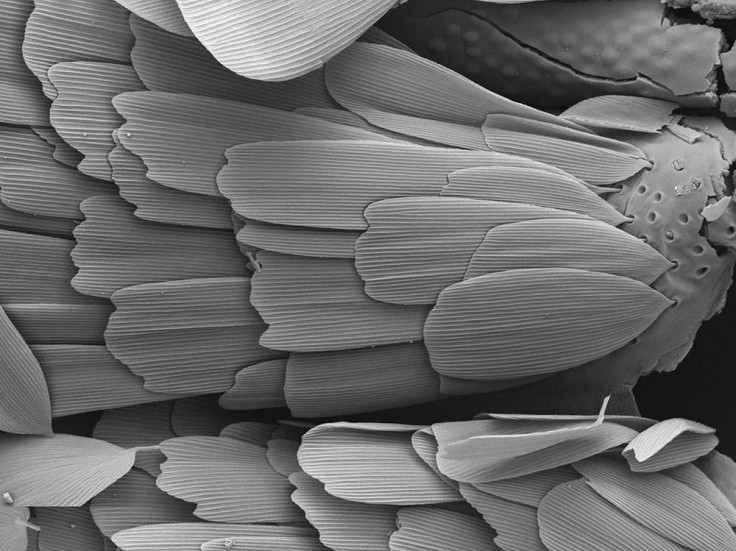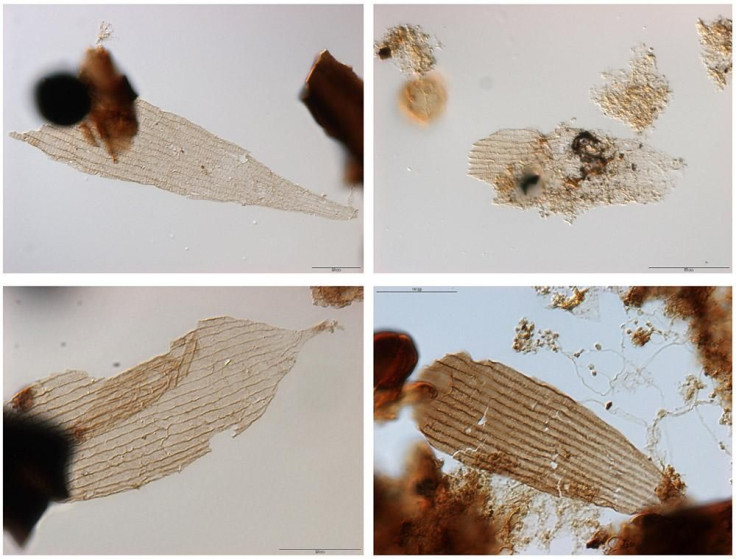Ancient Butterflies Flourished During Triassic-Jurassic Mass Extinction, Didn’t Need Flowers, Nectar

We are used to thinking of butterflies and flowers together, the two living in a symbiotic relationship in which the butterfly helps with pollination in return for nectar from the flowers as nourishment. But it turns out butterflies were living long before the first flowering plants ever appeared on Earth.
An international team of scientists led by Timo van Eldijk and Bas van de Schootbrugge from Utrecht University, the Netherlands, found fossil remains of moths and butterflies dating back to over 200 million years ago, making them the oldest known fossils of Lepidoptera — the order of insects to which butterflies and moths belong. Fossils of the earliest known flowering plants, by contrast, date back to about 130 million years ago.
The Lepidoptera fossils were found in northern Germany, and they preserved wings and body scales. The sediments housing the fossils are from the time of the Triassic-Jurassic mass extinction event about 201 million years ago, when at least half of all species on Earth died out and the terrestrial ecological niches suddenly left vacant allowed dinosaurs to dominate the planet for the next 140 million years.

While many other species and entire genera were dying out, butterflies seemed to be doing very well for themselves.
“The mass extinction event occurred at the end of the Triassic and was associated with massive volcanism as the super continent Pangea started to break apart. As a result, biodiversity on land and in the oceans suffered a setback with many key Triassic species going extinct, including many primitive reptiles. However, one major group of insects, the Lepidoptera moths and butterflies, appeared unaffected. Instead, this group diversified during a period of ecological turnover,” van Eldijk explained in a statement Wednesday.
Member of the order Lepidoptera have, like some other insects, a proboscis — a tongue/needle-like tube they use for sucking and eating. The fossils showed clear indications of a proboscis, even though flowers didn’t exist at the time. The researchers concluded the first Lepidopterans fed on non-flowering seed plants called gymnosperms, which were the dominant plant group during the Jurassic. Many of these plants secreted sweet droplets of pollen that were slurped up by the earliest moths.

Russell Garwood of the University of Manchester, who was not connected with the study, told BBC it had always been assumed that the proboscis, which appears coiled among Lepidopterans, had mutually evolved along with the flowers pollinated by those insects.
“This new evidence suggests that perhaps the coiled mouthparts had another role, before flowering plants evolved,” he said.
The researchers said they learnt something new about the resilience of these insects to changes in the climate, as well as their evolutionary history.
“By studying how insects and their evolution was affected by dramatic greenhouse warming at the start of the Jurassic, we hope to provide insight into how insects might respond to the human-induced climate change challenges we face today,” van Eldijk said.
An open-access study, titled “A Triassic-Jurassic window into the evolution of Lepidoptera,” appeared online Wednesday in the journal Science Advances.
© Copyright IBTimes 2024. All rights reserved.











